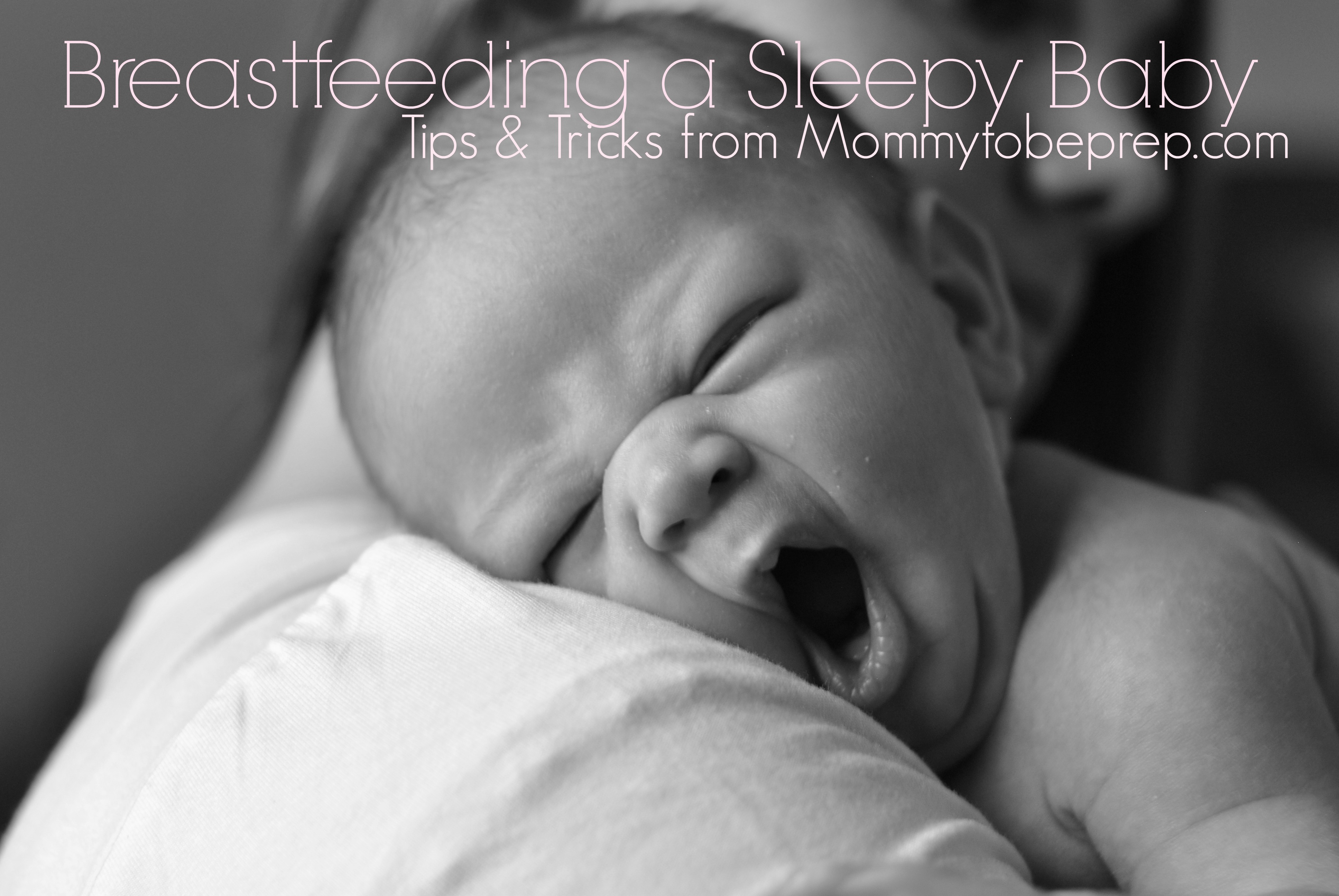Breastfeeding a Sleepy Baby

With each stage of your newborn’s life you may need to adjust your nursing techniques. Newborns tend to be lazy or sleepy, while infants tend to be distracted by noises and movements. Both create a unique challenge for breastfeeding.
How Do I get My Newborn Baby to Stay Awake to Breastfeed?
Babies are usually wide eyed and alert right after delivery for a couple of hours. This is why we healthcare workers call the first hour of delivery “The Golden Hour.” After this time of alertness, your baby will usually undergo a deep sleep, and sleep a lot for the next couple of days! It is important for parents to understand a newborn’s sleeping cycle and feeding cues to best support the baby’s needs and to prevent frustration of the mom and baby.
Newborns Sleeping Cycle
Expect your baby to sleep a lot in the first few days of life! One study looked at 75 full term newborns and the amount of sleep they obtained within their first three days of life. The total average hours of sleep obtained on the first day was 17 hours, 16.5 hours on the second, and 16.2 on the third!1 Other than being able to predict that your baby will sleep a lot and go through different types of sleep (active sleep, light sleep, and quiet sleep).2 There is no set schedule for when and how long each nap will be, each baby is different.3 Although, it is recommended that you do not let your baby sleep a stretch longer than 4-5 hours in the first early week.4
Recommended Frequency of Feeding Your Newborn
Although each newborn is different, the golden rule is to feed your newborn is 8-12 times within 24 hours, which equates to a feeding every 2-3 hours.5 Be attentive to your baby. Look for feeding cues. Feedings are timed from the beginning of one, to the start of the next feeding.6
Feeding Cues
- Increased alertness (fluttering or opening eyes)
- Turning head
- Opening mouth
- Putting hands to mouth
*Crying is a sign of late hunger. Place your baby on your chest at the first sign of hunger.
Coercing Your Sleepy Newborn to Feed
Breastfeeding encourages your milk supply to grow and meet your baby’s needs. This is why attempting to breastfeed every three hours is not only important for your baby’s caloric needs, but also for your breastmilk supply. Observe your newborn. If your baby has not fed for more than three hours and is still sleeping, there are some tricks to get your baby to latch and suckle.7
-Dim Lights so baby does not have to squint
-Un-swaddle
-Place baby skin to skin
-Talk to your baby
-Massage your baby’s hands and toes
-Stroke your baby’s tummy and back
-Self-express breast milk on your baby’s lips
If your baby does not show any signs of increased alertness after these steps, your baby is probably in “quiet sleep” which is the deepest level of sleep. You may want to let your baby continue to sleep and watch for your baby to shift into a lighter stage of sleep. Any twitching of limbs or eye movement under closed eyelids can be a sign of active sleep, an easier sleeping stage to arouse the baby.8
How do I know my newborn is getting enough?
By day four you should notice your breasts being a little larger and more full. Also by day four your baby should have four poopy/dirty diapers.9 Weight measurement is one of the best tools to measure breastfeeding adequacy. For more information see heading “Is My Baby Getting Enough Breast Milk?”
Newborn Weight Loss
Weight loss is absolutely normal for a newborn but the amount can be controversial. The newborn’s second and third days of life are usually the days of maximum weight loss. Usually the baby regains their birth weight back within the first two weeks postpartum. A weight loss of more than 7% of baby’s birth weight is “cause for further assessment and possible intervention.”10 Other sources identify “breastfeeding inadequacy” as 10% weight loss or more in the newborn.11
*If you have any concerns about how your baby is doing, contact your lactation consultant or healthcare provider.
References:
1 Parmalee, A. H., Schulz, H. R., & Disbrow, M. A. (1961). Sleep patterns of the newborn [Abstract]. The Journal of Pediatrics,58(2), 241-250. doi:10.1097/00006199-196101030-00064
2“Stages of Newborn Sleep – HealthyChildren.org.” 21 Nov. 2015, https://www.healthychildren.org/English/ages-stages/baby/sleep/Pages/Phases-of-Sleep.aspx.
3″Baby – Sleep – HealthyChildren.org.” https://www.healthychildren.org/English/ages-stages/baby/sleep/Pages/default.aspx.
4 Moran, Dianne E. , RN, LCCE, ICD, and G. Byron Kallam, MD, FACOG. “How Do I Know The Baby is Getting Enough To Eat?” Gift of Motherhood Nov. 2013: 102. Print.
5″POCKET GUIDE – Bright Futures – American Academy of Pediatrics.” https://brightfutures.aap.org/Bright%20Futures%20Documents/BFNutrition3rdEdPocketGuide.pdf.
6 Moran, Diane E., RN, LCCE, ICD, and G. Byron Kallam, MD, FACOG. A New Beginning Oct. 2013: 21-24.
7 “Waking a Sleepy Newborn – La Leche League.” https://www.llli.org/docs/0000000000000001WAB/WAB_Tear_sheet_Toolkit/03_waking_a_sleepy_newborn.pdf.
8″Stages of Newborn Sleep – HealthyChildren.org.” 21 Nov. 2015, https://www.healthychildren.org/English/ages-stages/baby/sleep/Pages/Phases-of-Sleep.aspx.
9 Nommsen-Rivers, L. A., Heinig, M. J., Cohen, R. J., & Dewey, K. G. (2008). Newborn wet and soiled diaper counts and timing of onset of lactation as indicators of breastfeeding inadequacy. J Hum Lact, 24(1), 27-33.
10 Noel-Weiss, Joy, Genevieve Courant, and A Kirsten Woodend. “Physiological Weight Loss in the Breastfed Neonate: A Systematic Review.” Open Medicine 2.4 (2008): e99–e110. Print.
11 Nommsen-Rivers, L. A., Heinig, M. J., Cohen, R. J., & Dewey, K. G. (2008). Newborn wet and soiled diaper counts and timing of onset of lactation as indicators of breastfeeding inadequacy. J Hum Lact, 24(1), 27-33.